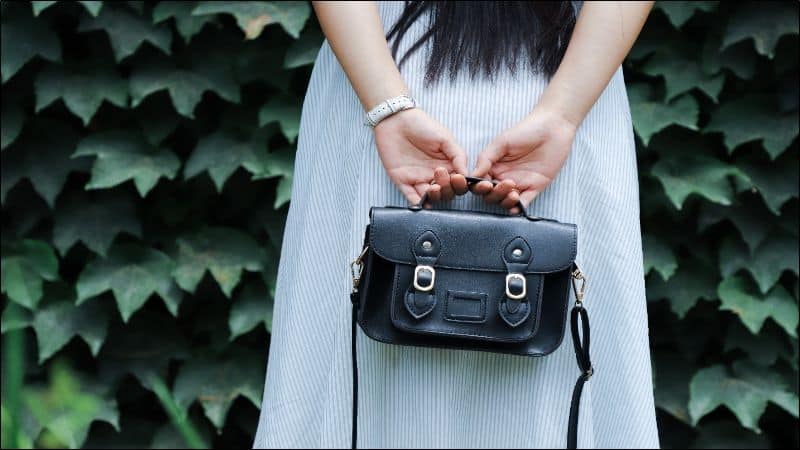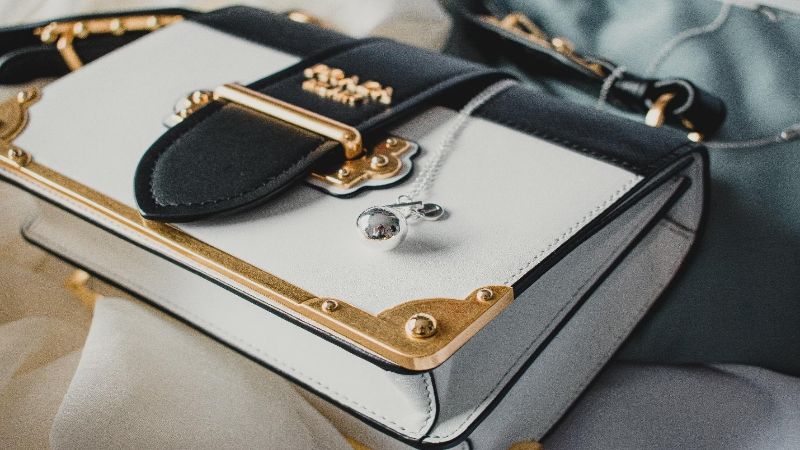You’ve just noticed the strap on your favorite leather handbag is starting to show its age. The fraying edges and the worn-out spots are screaming for attention. Don’t worry, it’s not the end of the road for your beloved bag!
Assess the Damage
Before deciding on the best course of action for your leather handbag strap, you need to accurately assess what sort of damage you’re dealing with. Examine the strap carefully. Is it a clean break or a frayed edge? Perhaps it’s just surface damage, like scrapes and scratches, or is the strap showing signs of deep cracks that suggest dryness and aging?
Look for stress points where the strap usually bears the most weight. These are often found near the anchoring points to the bag and could reveal the beginnings of a tear. Don’t overlook the hardware; buckles and clasps can also contribute to strap damage and may need repair or replacement.
If your bag has a padded shoulder section, check if the padding is still intact or if it’s shifting, as this can affect comfort and the overall look of the strap.
Once you’ve identified the specific issues, take stock of the severity:
- Minor surface damage can often be addressed with leather conditioner or dye.
- Deeper cracks may require a filler or a more extensive leather repair kit.
- Clean breaks or tears near attachment points might need sewing or a professional fix.
Taking action yourself can be tempting, especially if the solution seems straightforward.** But if you’re unsure or the damage is extensive, consult a professional**. A skilled leathercraft person can ensure your beloved handbag looks as good as new, without compromising its integrity or style. Remember, a hasty fix could lead to more damage and potentially higher repair costs in the long run.
Clean the Strap
Before diving into any repair strategy, it’s essential to clean your leather handbag strap thoroughly. Start by dusting off any surface dirt using a soft brush; this prevents any debris from causing more scratches during the cleaning process.
Next, you’ll need a gentle leather cleaner. Apply a small amount onto a soft, lint-free cloth and test it on an inconspicuous area of the strap to ensure it doesn’t affect the leather’s color. If the cleaner is safe, begin to work it into the strap in circular motions, focusing on areas with visible dirt or staining.
It’s crucial to avoid soaking the strap with too much cleaner. Leather absorbs liquids and excessive moisture can lead to additional damage or water stains. After cleaning, take another dry cloth to wipe off any residue and allow the strap to air dry naturally; do not expose it to direct heat or sunlight which can cause the leather to warp.
For tougher stains or buildup, you might consider using a specially formulated leather soap. Follow the same application process but use a slightly dampened cloth.
Once the strap is clean, observe whether the damage appears more superficial or extensive. Clean leather provides a clear picture, making it easier to decide on the most suitable course of action for repair.
Remember that leather needs to remain moisturized to avoid future cracks and tears. After the strap is completely dry, treat it with a high-quality leather conditioner. This not only keeps the leather supple but also adds a layer of protection against future wear and tear.
Throughout the cleaning process, handle your handbag strap with care. Rigorous scrubbing can exacerbate damages, especially at stress points and near hardware. Gentle, thorough cleaning is the best way to ensure your strap is prepped and primed for any necessary repairs.
Repair Small Frays
After you’ve cleaned and conditioned the leather strap on your handbag, give it a keen look. You might notice small frays along the edges or at stress points. These minor issues don’t mean the end of your beloved accessory. With a little DIY savvy, you’ll have it looking as good as new.
Trim any loose fibers with a pair of sharp scissors. Be careful not to cut into the strap itself. Next, you’ll need a leather adhesive. Pick a flexible, leather-grade glue for a strong bond that can withstand daily use.
Apply the adhesive with precision; you’d want just enough to bind the fibers without leaving residue. Press the treated area firmly and wipe away any excess glue immediately with a damp cloth. Allow it to dry as per the instructions on the glue—usually, a few hours will suffice.
Are there frays that seem more like a scratch than loose fibers? You can handle those too. Take a leather repair kit—ideally one that matches the color of your handbag strap. Apply a small amount of the repair compound into the scratch. Smooth it out so it’s level with the surface of the leather. This might require multiple thin layers, letting it dry between applications.
In the meantime keep using the leather conditioner. It helps blend the repair into the rest of the strap by maintaining an even sheen and color throughout. Remember to test any product on an inconspicuous spot first, ensuring that it’s the right fit for your leather’s finish.
While no fix is ever completely invisible, your goal is to make the strap functional and discreetly mend the appearance. With good care, the bag can still have a long stylish life ahead.
Patch up Worn-out Areas
« How to Make Your Own Handbag: A Step-by-Step DIY Guide to Chic Style
How to Start a Handbag Line: Unveil Chic Designs & Sell Out Fast »
Once you’ve handled the initial clean-up and repair of frays and scratches, it’s time to tackle the more conspicuous worn-out areas. Leather patches are a godsend in these scenarios. Select a patch that matches the color and texture of your handbag strap as closely as possible. This will ensure a seamless look once applied.
To apply the leather patch, follow these steps:
- Cut the patch: Trim it to a size slightly larger than the worn-out area.
- Apply adhesive: Spread a thin layer of leather glue on the back of the patch.
- Secure the patch: Place it over the damaged area and press firmly. Apply pressure evenly to avoid bubbles or creases.
Allow the glue to dry according to the manufacturer’s instructions. Once it’s set, take a fine-grain sandpaper and gently buff the edges of the patch. This helps to blend it smoothly with the existing leather, making the repair less noticeable.
For deeper worn-out areas, you might need a leather filler before applying a patch. Apply the filler to build up the area that’s lost its integrity and let it dry. Afterwards, sand it down to make sure the surface is even before you attach the patch.
Maintaining the integrity of your leather handbag is crucial, especially in stress areas such as the strap. By patching up worn-out spots, you not only fix current damage but also prevent future wear and tear. Regular check-ups on your bag’s strap will allow you to spot and tackle problem areas before they worsen.
Remember, the goal is to extend the life of your favorite accessory, keeping it functional and stylish for as long as possible. Regular maintenance coupled with timely repairs can make all the difference.
Strengthen the Strap
Once you’ve tackled the immediate issues, it’s time to strengthen your leather handbag strap to extend its life. This step is essential, and it’s easier than you might think.
Start by applying a leather binder. It’s a liquid substance that reinforces the leather’s fibrous structure. Apply sparingly; you’re not soaking the strap, just giving it a strengthening coat. Allow the binder to dry according to the product instructions—usually a couple of hours.
Next, consider edge coating for straps with frayed edges. This product seals the edges and prevents further unravelling. Apply a thin layer, let it dry, then add another layer if necessary. Patience is key for a smooth finish.
- Proper bonding
- Drying thoroughly
- Repeat for sturdier edges
For enhanced durability, apply a layer of leather protectant spray. Not only does this help repel water and resist stains, but it also prevents the leather from drying out and cracking over time. Spray evenly across the strap’s surface and avoid over-saturating.
- Repels moisture
- Prevents stains
- Protects against dryness
If the strap feels exceptionally weak, you might want to insert a support material into the strap, like a strip of nylon webbing. You’ll need to carefully open a section of the strap, place the webbing inside, and stitch it closed. This technique provides extra strength but keeps the strap’s flexibility and appearance.
Lastly, practice regular maintenance. Don’t wait for the next break or tear; make strengthening part of your routine handbag care. Regularly applying leather conditioner, keeping the handbag stored properly, and avoiding overstuffing can go a long way in maintaining strap integrity.
- Routine applications
- Proper storage
- Avoiding excess weight
By following these steps, you’ll not only repair but also fortify your leather handbag strap, ensuring it can handle your day-to-day use with grace and durability.
Conclusion
You’ve got all the tips and tricks to bring your leather handbag strap back to life. Remember, a gentle touch and the right products go a long way in cleaning and repairing your strap. With a bit of patience and care, you can reinforce its strength and ensure it continues to support your favorite accessory for years to come. Don’t forget that regular maintenance and smart storage are your best friends in preserving the look and durability of your handbag. Now go ahead, give your leather strap the TLC it deserves, and step out in style with confidence!
Frequently Asked Questions
What is the best way to clean a leather handbag strap?
To clean a leather handbag strap, gently brush off any dirt using a soft brush and then apply a gentle leather cleaner. Do not soak the strap; instead, apply cleaner and then buff gently.
Can I repair frays and scratches on a leather strap at home?
Yes, you can trim small frays with scissors and use leather adhesive and a leather repair kit to address scratches and slight damages on your leather strap.
How can I patch worn-out areas on my leather handbag strap?
Patch worn-out areas on a leather strap using leather patches cut to size and a leather filler to blend and reinforce the damaged section.
What should I use to strengthen a worn-out leather strap?
Strengthen a worn-out leather strap by applying a leather binder, edge coating, and finally, a protective leather sealant or protectant spray.
Is it possible to add extra strength to a leather handbag strap?
Yes, you can insert a support material such as nylon webbing inside the strap to add extra strength and minimize future wear and tear.
How can I maintain the integrity of my leather handbag strap?
Maintain the integrity of your leather strap with regular cleaning, immediate repairs when necessary, and proper storage to prevent damage from environmental factors.











